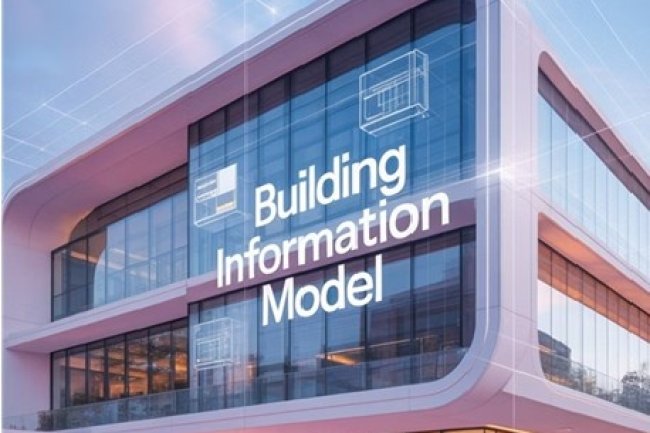The Role of BIM in Integrated Building Design
How Architecture, Structure, and MEPF Come Together Through Building Information Modeling

Why Integrated Design Matters More Than Ever
|
The construction industry has evolved beyond siloed workflows. Today's successful projects demand seamless coordination between architectural vision, structural integrity, and mechanical-electrical-plumbing-fire protection (MEPF) systems. When these disciplines work in isolation, the results are predictable: clashes during construction, budget overruns, and delays that frustrate everyone involved. Building Information Modeling (BIM) has emerged as the solution that brings all stakeholders to the same digital table. It's not just about creating 3D models—it's about establishing a single source of truth that evolves throughout the project lifecycle, ensuring every decision is informed by real-time data and coordinated design intelligence. |
|
How BIM Transforms Each Design Discipline
Architecture
BIM enables architects to design with precision while maintaining creative flexibility. Parametric modeling allows instant updates across all documentation when design changes occur, eliminating manual revision work.
- Real-time design visualization
- Automated code compliance checking
- Material and space optimization
Structural Engineering
Structural engineers use BIM to analyze load paths, optimize material usage, and validate connections before construction begins. The model becomes an analysis tool, not just documentation.
- Integrated structural analysis
- Clash detection with architecture
- Construction sequencing validation
MEPF Systems
MEPF designers leverage BIM to route complex systems through tight spaces while maintaining accessibility and code compliance. Coordination becomes proactive rather than reactive.
- System routing optimization
- Energy performance modeling
- Maintenance access planning
The BIM Coordination Process
Design Development
Each discipline develops detailed models in their specialized software while following shared coordination standards and naming conventions.
Model Federation
Individual models are combined into a federated coordination model where spatial conflicts and overlaps become immediately visible.
Clash Detection
Automated software identifies conflicts between systems, generating prioritized reports that guide coordination meetings and adjustments.
Resolution & Documentation
Teams collaboratively resolve clashes, update their models, and finalize coordinated drawings for construction release.
Real Benefits: What BIM Delivers to Your Project
|
|
The value of BIM extends far beyond producing pretty 3D visualizations. When implemented properly, it fundamentally changes project outcomes in measurable ways that impact your bottom line and schedule. Reduced Rework: Studies consistently show that projects using coordinated BIM workflows experience 40-60% fewer change orders during construction. Catching conflicts in the digital model is exponentially cheaper than discovering them in the field. Accelerated Schedules: When construction teams receive clash-free, coordinated models, installation proceeds faster with fewer delays. Prefabrication becomes more feasible when dimensions and connections are verified digitally. Better Cost Control: Quantity takeoffs extracted directly from BIM models are more accurate than manual calculations, reducing estimating errors and providing reliable data for budgeting and procurement decisions throughout the project. |
Overcoming Common BIM Implementation Challenges
Software Interoperability Issues
Different disciplines often use specialized software that doesn't always communicate seamlessly. The solution lies in establishing clear file exchange protocols using industry-standard formats like IFC and maintaining consistent modeling standards across all platforms. Companies like Consac specialize in bridging these technical gaps, ensuring smooth data flow between architectural, structural, and MEP teams regardless of their preferred software tools.
Team Training and Adoption
BIM represents a significant shift from traditional 2D workflows, and team members need proper training and support. Start with pilot projects that demonstrate value quickly, then expand gradually. Invest in training that focuses on practical workflows rather than just software features.
Managing Model Detail Levels
Over-modeling wastes time while under-modeling fails to catch problems. Define clear Level of Development (LOD) standards for each project phase — concept models need less detail than construction models. Establish what information is needed when, and model accordingly.
Practical Steps to Start Your BIM Journey
01. Assess Your Current Capabilities
Evaluate your team's existing software, skills, and project delivery methods. Identify gaps between current state and BIM-enabled workflows.
02. Establish BIM Standards
Develop clear modeling standards, naming conventions, and coordination protocols. These form the foundation for consistent, reliable implementation.
03. Choose the Right Technology Stack
Select software tools that match your discipline needs and integrate well with collaborators. Consider both design authoring tools and coordination platforms.
04. Implement on a Pilot Project
Start with a project of manageable complexity where you can learn, refine workflows, and demonstrate value before scaling up.
05. Build Continuous Improvement
Capture lessons learned, update standards based on experience, and gradually expand BIM use across your project portfolio.
The Future is Integrated
Building Information Modeling isn't just a technological trend — it's become the industry standard for how complex buildings are designed and constructed. The question is no longer whether to adopt BIM, but how quickly you can implement it effectively.
Projects that embrace integrated design through BIM consistently deliver better outcomes: fewer surprises during construction, tighter budget control, and buildings that perform as designed. For architecture, structural, and MEPF teams, BIM provides the common language and shared platform that makes true collaboration possible.
The investment you make in BIM capabilities today pays dividends on every project tomorrow. Start with clear goals, commit to proper implementation, and watch as coordination issues that once seemed inevitable become rare exceptions rather than the norm.
What's Your Reaction?


















